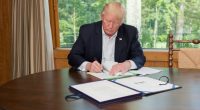China Sends 149 Warplanes into Taiwan’s ADIZ over Four Days, Prompting Grave Concerns about a Chinese Invasion of Taiwan
On October 3, the United States expressed grave concern and warning over China’s increased “provocative military activity” near Taiwan, in the wake of a record number of Chinese military aircraft intruding into Taiwan’s air defense identification zone (ADIZ) for three consecutive days. Nonetheless, on October 4, China sent 56 warplanes into Taiwan’s ADIZ in the largest show of force on record, prompting grave concerns about a possible Chinese invasion of Taiwan.
On China’s National Day on October 1, a total of 38 Chinese aircraft entered into Taiwan’s southwestern ADIZ, setting a record for the largest intrusion in a single day since September 2020, when Taiwan government began issuing reports of such Chinese military activities. On October 2, China broke that record by sending 39 warplanes toward Taiwan. On October 3, China sent another 16 military aircraft.
On October 3, a statement from U.S. State Department spokesperson Ned Price warned that China’s military activity near Taiwan risks miscalculation and undermines regional peace and stability. “The United Sates is very concerned by the People’s Republic of China’s provocative military activity near Taiwan, which is destabilizing, risks miscalculations, and undermines regional peace and stability,” Price said. “We urge Beijing to cease its military, diplomatic, and economic pressure and coercion against Taiwan,” he added.
Nevertheless, on October 4, China sent 56 warplanes into Taiwan’s ADIZ in two separate sorties, setting the new highest number in a single day. The first Chinese sortie comprised of 52 aircraft during the daytime, including 34 J-16 fighter jets, two SU-30 fighters, 12 unclear-capable H-6 bombers, two Y-8 anti-submarine warfare planes, and two KJ-500 third-generation airborne early warning and control (AEW&C) aircraft. Another sortie comprising of four J-16 fighters occurred at night.
From October 1 to 4, a total of 149 Chinese military aircraft intruded into Taiwan’s ADIZ: 38 on Oct. 1; 39 on Oct. 2; 16 on Oct. 3; and 56 on Oct. 4. The Taiwan Air Force responded by scrambling planes to keep the intruding Chinese aircraft at bay, issuing radio warnings, and mobilizing air defense assets.
The new high figure in a single day coincided with a Twitter message posted by the commander of the U.K. Carrier Strike Group on October 4, saying a fleet led by the U.K. HMS Queen Elizabeth carrier has passed from the Philippine Sea through the Luzon Strait in preparation for an exercise with the Singapore Navy in the South China Sea.
During October 2–3, the Japan Maritime Self-Defense Force joined the HMS Queen Elizabeth, the USS Carl Vinson, and USS Ronald Reagan to launch an exercise in waters southwest Okinawa along with warships dispatched by the Netherlands, Canada and New Zealand.
“We are very concerned that China is going to launch a war against Taiwan at some point, even though the threat may not be imminent at this point,” Taiwanese Foreign Minister Joseph Wu said in an interview with the Australian Broadcasting Corp. broadcast on October 4.
FAPA President Minze Chien stated: “As China continues to strengthen its military capabilities and increase threats toward Taiwan, we believe the time is NOW for the U.S. to replace outdated ‘Strategic Ambiguity’ with ‘Strategic Clarity’ to sufficiently deter China’s aggression toward Taiwan and in the region. There should be zero doubt for China and the rest of the world about U.S. commitment to keep democratic Taiwan free!”
References:
[1] Focus Taiwan: https://focustaiwan.tw/cross-strait/202110040027
[2] Taipei Times: https://www.taipeitimes.com/News/front/archives/2021/10/04/2003765482
[3] Taiwan News: https://www.taiwannews.com.tw/en/news/4305846
U.S. and Taiwan Voice Concerns over China’s Increasing Military Pressure Against Taiwan
The United States has voiced concern over China’s “provocative military activity” near Taiwan and “strongly urged” China to cease its military, diplomatic, and economic pressure and coercion against Taiwan, following China’s recent deployment of a record number of military aircraft into Taiwan’s ADIZ.
“We remain concerned by the People’s Republic of China’s provocative military activity near Taiwan, which is destabilizing, risk miscalculations and undermines regional peace and stability,” White House Press Secretary Jen Psaki said at a news briefing on October 4. She said the United States has an abiding interest in peace and stability across the Taiwan Strait and therefore will continue to assist Taiwan in maintaining a sufficient self-defense capability.
Though President Joe Biden has not expressed his government’s concern over the issue to China directly, Psaki said high-level officials in Washington who are in constant communication with Beijing have conveyed the U.S.’ concern about China’s increasing pressure against Taiwan through diplomatic channels.
U.S. State Department spokesperson Ned Price echoed Psaki during a separate press briefing on October 4, saying that the U.S. is “very concerned” by the PRC’s “provocative military activity” near Taiwan and “strongly urge[s]” Beijing to cease its military, diplomatic, and economic pressure and coercion against Taiwan. He added that the U.S. commitment to Taiwan is “rock solid,” contributing to the maintenance of peace and stability across the Taiwan Strait and within the broader region.
Asked to comment, Taiwan’s Defense Minister Chiu Kuo-cheng said on October 5 in Taipei that China’s recent military maneuvers near Taiwan’s ADIZ have indeed put “huge pressure” on the country’s Navy and Air Force. Moreover, Taiwan’s Premier Su Tseng-chang has criticized the Chinese move as “bullying” by China. Premier Su also thanked the U.S. for its concern over China’s proactive moves against Taiwan.
It’s unclear why Beijing is sending so many planes to the ADIZ, but the timing coincides with China’s National Day on October 1 and some analysts have said it could be an attempt to assert China’s determination to safeguard what it sees as its “territorial integrity” and its goal of eventually “unifying” with Taiwan.
Chieh Chung, a research fellow at the Taiwan think tank Association of Strategic Foresight, told that the People’s Liberation Army (PLA) aircraft had intruded into Taiwan’s ADIZ both at night and during the day, in a show of the PLA’s capabilities to deploy military assets to Taiwan “at any time.” Chieh added, the aircraft were from different squadrons, which was a demonstration of the PLA’s “joint combat capabilities” and its ability to quickly assemble assets “from different units.”
Lin Ying-yu, an assistant professor at Taiwan’s National Sun Yat-sen University, said he suspected the Chinese deployments were aimed at raising pressure on Taiwan and displaying China’s military might to neighboring countries as well as the U.S. and the United Kingdom.


